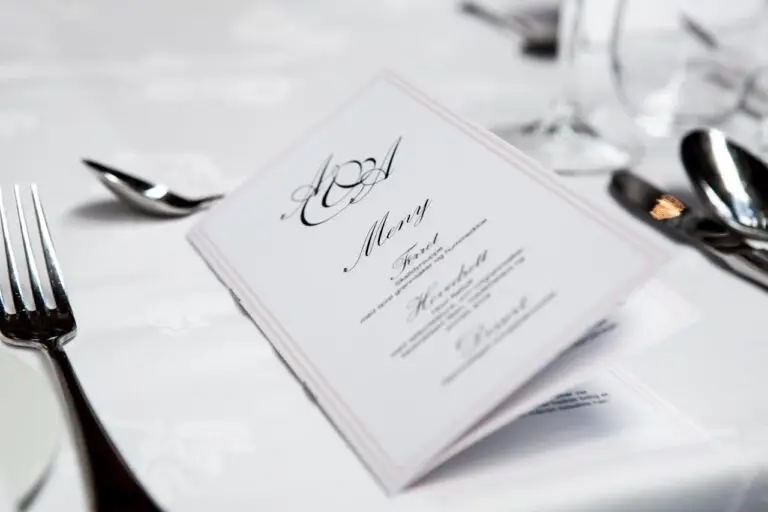For small restaurants, the menu is more than just a list of dishes; it’s a crucial marketing tool that communicates the identity of your establishment, showcases your culinary creativity, and guides customers through a satisfying dining experience. An effectively designed menu can enhance customer satisfaction, increase sales, and highlight your restaurant’s strengths. Here’s how to master the art of menu design with strategies tailored for small restaurants.
Understand Your Brand and Audience
Reflect Your Restaurant’s Identity
Your menu should be a reflection of your restaurant’s brand, from the color scheme and font choice to the language used to describe each dish. Whether your establishment is casual and family-friendly or upscale and sophisticated, ensure your menu design aligns with your overall aesthetic and ethos. This coherence helps solidify your brand identity in the minds of your customers.
Know Your Customers
Understanding your target audience is key to designing an effective menu. Consider the demographics of your typical diner, including their dining habits, preferences, and price sensitivity. This insight will inform not only the types of dishes you offer but also how you present them on your menu.
Balancing Variety and Simplicity
Curate Your Offerings
For small restaurants, it’s often more effective to offer a carefully curated selection of dishes rather than an extensive menu. This approach allows you to focus on quality and consistency while simplifying inventory management. Ensure your menu has a balanced mix of appetizers, entrees, and desserts, with options to accommodate various dietary preferences and restrictions.
Highlight Signature Dishes
Identify and highlight dishes that are unique to your restaurant or have been particularly popular with customers. These signature items can become the cornerstone of your menu, drawing in diners and encouraging them to return. Use visual cues like boxes, icons, or different fonts to make these dishes stand out.
Design for Clarity and Appeal
Layout and Readability
An intuitive and easy-to-navigate menu design enhances the dining experience. Organize your menu logically, grouping items by category and considering the flow of a typical dining experience from starters to desserts. Use clear, legible fonts and ample white space to ensure readability. Remember, your menu should be accessible to all customers, including those with visual impairments.
Use Descriptive Language
Engage your customers’ senses with vivid, descriptive language that highlights the flavors, ingredients, and preparation methods of each dish. Be authentic and avoid overloading descriptions with unnecessary adjectives or culinary jargon that might confuse diners. Well-crafted descriptions can entice customers and guide their choices, potentially increasing sales of higher-margin items.
Pricing Strategies
Psychological Pricing
Consider psychological pricing techniques to make prices seem more appealing. For example, pricing items at $14.99 instead of $15.00 can make a dish appear more affordable. Additionally, omitting currency symbols from your menu can reduce the emphasis on cost and encourage diners to focus on the value and quality of the dishes.
Menu Layout and Item Placement
Strategically place high-profit items in prime locations on your menu, such as the top right corner, where diners’ eyes naturally go first. Use design elements like boxes or borders to draw attention to these items. Balancing profitability with customer favorites ensures a satisfying experience for diners and financial health for your restaurant.
Leveraging Technology
Digital Menus
For small restaurants looking to stay current, digital menus offer flexibility and ease of updating. Tablets, QR codes linking to online menus, or digital display boards can be used to present your offerings. Digital menus also provide an opportunity to include images of dishes, further enticing customers and potentially increasing sales of specific items.
Collecting and Incorporating Feedback
Utilize technology to gather feedback on your menu items, whether through online reviews, social media, or direct customer surveys. This feedback can be invaluable in making data-driven decisions about which dishes to keep, modify, or remove from your menu.
Actionable Steps for Effective Menu Design
- Audit Your Current Menu: Review your existing menu for clarity, brand alignment, and customer appeal. Identify areas for improvement based on feedback and sales data.
- Define Your Brand and Audience: Clearly articulate your restaurant’s brand identity and understand your target customer’s preferences. This understanding will guide your menu design choices.
- Curate Your Offerings: Streamline your menu to focus on a balanced selection of high-quality, distinctive dishes. Consider seasonality and the availability of ingredients.
- Design with Clarity and Appeal: Ensure your menu is visually appealing, easy to read, and organized logically. Highlight signature dishes and use descriptive language to entice diners.
- Implement Pricing Strategies: Apply psychological pricing techniques and strategically place high-margin items to enhance profitability.
- Embrace Technology: Explore digital menu options for flexibility and to stay current with trends. Use technology to gather and analyze customer feedback.
- Continuously Evaluate and Adapt: Regularly review your menu’s performance, incorporating customer feedback and sales data to make informed adjustments.
By mastering the art of menu design, small restaurants can create a powerful tool that enhances the dining experience, supports brand identity, and drives profitability. With careful consideration of your brand, audience, and the balance between variety and simplicity, your menu can become one of your greatest assets in achieving long-term success.

